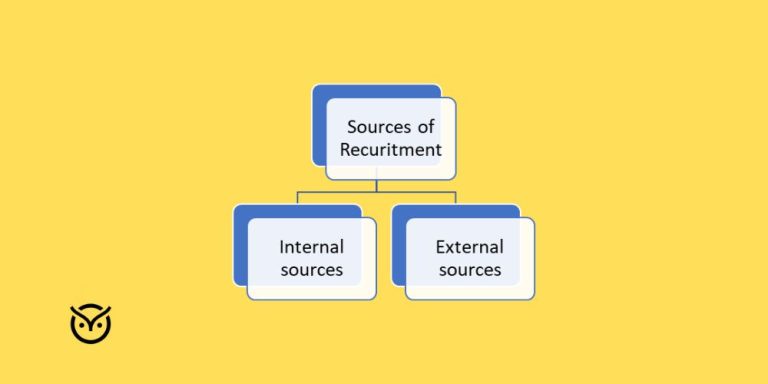Recruiting Tips for Finding Better Candidates

TL;DR
- Define the role clearly with a strong job description.
- Create a detailed candidate profile including cultural fit.
- Research competitor job ads and salaries before posting.
- Use employee referrals and professional networks.
- Strengthen employer branding on social media.
- Explore low-cost hiring channels and remote-friendly methods.
- Prioritize diversity and inclusive hiring practices.
- Keep the application process simple and mobile-friendly.
- Give feedback to all candidates, even rejections.
- Structure interviews with consistent questions and scorecards.
- Make candidates comfortable to get genuine responses.
- Evaluate both soft and technical skills.
- Track recruitment metrics (time to hire, cost per hire, etc.).
- Use AI for screening and logistics, not candidate engagement.
- Create a structured onboarding plan with mentors.
- Gather feedback from candidates, teams, and new hires regularly.
Many recruiters struggle to attract, evaluate, and retain the right candidates. Trouble being the cost, time-consuming process, and uncertainty. SHRM states that the average cost per hire is as huge as $4,700, and it only goes higher from here depending on the position and industry. Poor recruitment practices are expensive. But guess what? They are also preventable. Here are the best recruiting tips that will help your recruitment process be more efficient and your candidate experience become more enhanced.
Understanding Your Hiring Needs

Define the Role with Laser Focus
To start off you need a thorough job analysis. Ask the following questions:
- “What role will this person be responsible for?”
- “How many years of experience should they have?”
- “What will be the skill set required?”
- “What will be their day-to-day activity?”
- “What outcomes do we expect from them?”
After gathering all the information you need, write a solid job description which is clear and welcomes diversity. According to a CareerBuilder survey, 72% of the managers say that they’ve hired the wrong person for the job. This may be due to the fact that their job descriptions aren’t strong in the first place. This is one of those job recruiting tips that sets the foundation for hiring.
Build a Detailed Candidate Profile
This is just like drawing up a fantasy character except that this character is drawn up by research and experience. If you have a job opening, imagine who would be the ideal character for your job. Would it be a fast learner? Or would it be someone extremely detail-oriented? But building a candidate profile doesn’t only include the technical aspects, you also need to consider what kind of candidate would be a cultural fit for the company.
Benchmark Against Competitors
Have you ever done a competitor analysis before posting a job ad? No? Well, this is your sign to start doing it now. You need a strategic plan against your competitor on how you can attract better talent than them for the same position they’re hiring for. What can you do that they haven’t done yet? Scrutinize the job description and salary that competitors are offering before deciding your own.
Effective Recruiting Tips and Strategies

So, you understand what you want, now comes the hardest part of the recruitment process, finding the person you want.
Leverage Employee Referrals & Professional Networking
According to Forbes, 55% of the employees hired through the referral process stay in the company for four years or longer, while only 25% from job boards remain for two years or longer. Give incentives on referrals and thank the employee if it works out for the company.
Master Employer Branding & Social Media Recruiting
According to CareerArc, 75% of job seekers consider an employer’s brand before applying. Employer branding matters a lot, and here is how:
- Candidates are scrutinizing companies just as much as companies are scrutinizing them.
- Having only a career page doesn’t cut it anymore.
- You need to have updated social platforms that showcase your culture and values. This can be done by posting videos of employees working together and having fun, videos like “day-in-the-life of a [company name] employee”, and highlighting the diversity and inclusion aspect as well.
Budget-Friendly & Remote-Friendly Strategies
Out of budget? No problem. You still have the option to partner with local universities for interns to hire programs, webinars and virtual open houses, and job postings on free or low-cost job boards.
Remote or hybrid organizations use remote recruiting tips like async video screening, time zone-friendly scheduling, and assessing remote readiness, which are both budget and remote friendly.
Prioritize Inclusive Hiring from the Start
Diversity brings innovation and efficiency and that is exactly why hiring should start with a clear and diverse process. Some recruiting tips for sourcing are to screen resumes blindly and to source your candidates from communities that are underrepresented.
Optimizing the Candidate Experience

One of the best recruiting tips for employers and hiring managers is to make the right first impression. You should offer a great candidate experience as it improves your employer brand, increases your acceptance rates, and builds a talent pipeline for the long run.
Simplify Your Application Process
A study by Glassdoor states that almost 58% of job seekers use their phones to apply for jobs.
Often overlooked but this is one of those recruiting tips that can change hiring for you. Make your application process as simple as possible because who enjoys filling out long forms?
Some tips are to keep your form under 10 minutes and no more, don’t ask redundant questions because you already have their resume for their job history, and make sure the form is optimized for mobiles.
Provide Feedback — Even When It’s a No
Want a recruiter tip and trick? It’s to give feedback to even those candidates whom you have rejected. There is no need for a long email, but constructive feedback can go a long way because it makes your brand seem more human, helps in the growth of the candidate, and keeps the doors open for future opportunities.
Even with the promising candidates you didn’t hire, keep them in your talent pipeline. These recruiting tips and tricks will help you in building goodwill and reduce time to hire in the long run.
Conducting Effective Interviews

Interviews can make or break your hiring decision. So, make sure the interviews you conduct aren’t vague, inconsistent, or filled with unconscious bias. You should make your interview process structured, thoughtful, and full of clear communication.
Structure Your Interviews with Purpose
The most important part of an interview process is to structure it well. To do this, you should create a standard set of questions that you ask every candidate who is applying for the same job.
Another thing to focus on is situational and behavioral questions. Prepare and use scorecards to rate the candidates based on how they respond.
Make Candidates Comfortable So You See the Real Them
Suppose you carefully select a promising resume and call the candidate for an interview, but they can’t speak up due to being too nervous. It will only serve to elongate the hiring process. To avoid this, you need to make your interview candidates feel comfortable and at ease; otherwise, they won’t be able to perform to the best of their abilities.
The way to do it is to start with a warm greeting and a quick overview of the purpose of the interview and how the conversation will flow. If the interview lasts longer than expected, you should offer breaks. You should always give candidates some space to ask questions. Lastly, end the interview with a thank you note.
Remember, interviews are two-way conversations. If a candidate is too nervous or unclear on what to expect, they may not perform at their best.
Evaluate More Than Just Skills
An organization requires soft skills as much as technical skills, and to judge these skills, the recruiter should ask scenario-based questions from the candidate and evaluate their collaboration, problem-solving, conflict resolution, and leadership skills.
Making Data-Driven Hiring Decisions

Here are some data-backed recruiting tips because relying on your gut is too old school.
Use Scorecards to Standardize Interview Evaluations
So, how are you justifying why you hired a certain employee? To answer this question, you rely on scorecards, which are one of the most actionable recruiting tips for recruiters. They can be used for any organization.
To create a scorecard, you just need a simple rubric in front of which you grade the candidates, which can include technical skills, communication skills, culture fit, initiative, etc.
Scorecards aren’t just for large enterprises — they’re one of the most scalable and effective recruiting tips for any size team.
Leverage AI and Automation
Contrary to the popular belief that AI can take our jobs, we should focus on building a human and AI friendship in a way that AI does all the heavy lifting while you can focus on other important things. But overuse of AI can lead to a robotic process, which we definitely aren’t going for.
The tip is to use AI to screen the overlooked resumes in case any promising talent was missed, use it for logistics and not for candidate engagement, and make it do regular audits on your tools to make sure that fairness and compliance is there.
Track the Metrics That Drive Performance
Measure every step of the recruitment process because if you don’t, you will not be able to tell what is working and what needs to be fixed.
Some of the key metrics you should definitely measure include time to hire, cost per hire, offer acceptance rate, first-year attrition, and candidate net promoter score.
Setting New Hires Up for Success

Has your candidate accepted the offer? You might think that’s the end of it all, but it takes up to 90 days for a new employee to make or break it. You might think you had the candidate you wanted but faced with problems like performance issues, disengagement, or receive an early resignation. Why? Well, poor onboarding experience, for starters. All you need to do to avoid this is to improve your onboarding process.
Design a Clear, Structured Onboarding Plan
An essential tip for new recruiters is to prepare a welcome email informing the new hire on what to expect on the first day. Next is a checklist of tech setup, documents, and training sessions. Make sure you onboard the employee on all the communication tools and team platforms.
If you’re working remotely or hybrid, this step makes the onboarding even better. It is easier to build an onboarding template in advance that can be standardized and reused.
Assign Mentors and Encourage Early Social Integration
Wouldn’t you love it if you started your job and had an assigned mentor who could show you the ropes and listen to the troubles you were facing during your early days at a new company?
This is one of those recruiting tips that makes an employee feel at ease at a new company, and according to SHRM, 69% of employees would prefer to stay at a company for up to three years if they had a great onboarding experience.
Measuring & Improving Your Recruiting Strategy

If you want to stay in the game, you gotta track what is working for you and what is not. Measuring and improving your recruitment strategy through regular testing, tracking, and tweaking is one of the most important recruiting tips in the world of talent acquisition.
Measure What Matters
Track key hiring metrics like time to hire, cost per hire, source of hire, candidate experience score or NPS, first-year attrition rate, etc. Keeping track of these metrics will help you spot inefficiencies as well as look into what is working for you.
You can do this by starting with 3-5 metrics and reviewing them monthly or quarterly with the help of tools like Google Sheets, Greenhouse, and Workable.
Gather Feedback from Candidates, Teams, & New Hires
As much as we place importance on numbers, we also need personal experiences. To do this, you need to use short surveys during the different phases of the hiring process so that you can get qualitative feedback from candidates, hiring managers, and new hires alike.
Conclusion
Recruitment is not just about filling gaps; it’s strategic team development. Successful recruitment involves structured interviews that evaluate technical and soft skills—Data-driven hiring, automation, and a pinch of humanity to keep the process efficient. Great onboarding improves retention, and metric measurement improves the process. The objective is continuous improvement. These practices assist recruiters in building teams, defining culture, and driving success.






